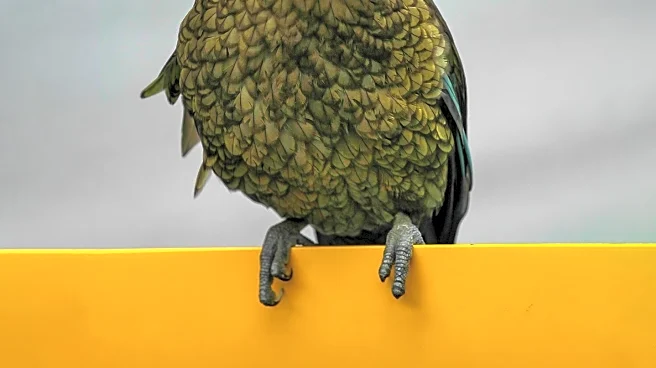What's Happening?
A recent study conducted by Alan's Factory Outlet has found that birds show a preference for pooping on certain types and colors of vehicles, with brown, red, and black cars being the most targeted. The study surveyed 1,000 vehicle owners and combined their responses with research on bird behavior and parking habits. It revealed that nearly 1 in 4 Americans spend over $500 annually on repairs and car washes due to bird droppings, and 1 in 10 reported paint damage from bird excrement. The study suggests that birds perceive color differently from humans, detecting ultraviolet light, which makes certain car colors stand out more in their environment. This preference is not limited to specific brands, as both domestic and imported brands are at risk, with Ram, Jeep, and Chevrolet being among the most pooped-on brands.
Why It's Important?
The findings of this study have significant implications for car owners, particularly those with dark-colored vehicles, as they may face higher maintenance costs due to bird droppings. The preference of birds for certain car colors could lead to increased expenses for car washes and repairs, impacting the automotive industry and consumer spending. Additionally, the study highlights the unique visual perception of birds, which could influence future car design and marketing strategies. Understanding these preferences may help car owners make informed decisions about vehicle color and parking choices to minimize the impact of bird droppings.
What's Next?
Car owners can mitigate the likelihood of their vehicles being targeted by birds by parking in covered areas, using car covers for long-term outdoor parking, and avoiding parking under trees or ledges where birds frequently roost. The study's findings may prompt further research into bird behavior and its impact on the automotive industry, potentially leading to new strategies for car design and marketing. Additionally, the automotive industry may explore innovative solutions to reduce the visibility of bird droppings on vehicles, such as developing new paint technologies or coatings.
Beyond the Headlines
The study raises questions about the broader environmental impact of bird droppings on vehicles, including potential damage to car paint and the associated costs for consumers. It also highlights the importance of understanding animal behavior and its implications for human activities and industries. The findings may encourage further exploration of the relationship between wildlife and urban environments, leading to new insights into how human activities influence animal behavior.













